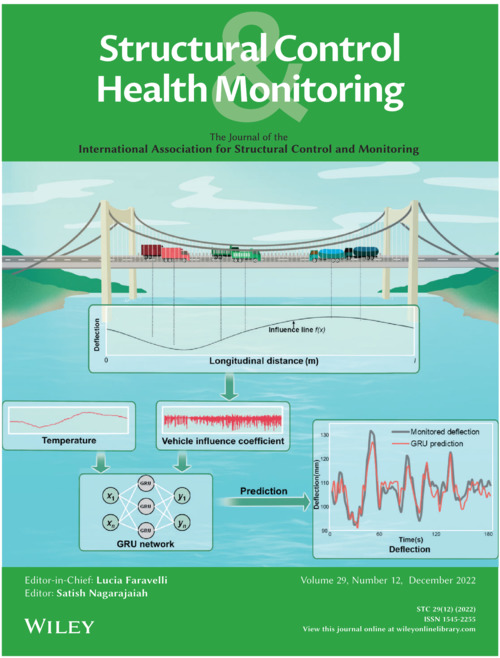基于文本数据和自然语言处理(NLP)的机器学习模型的公路桥梁状态评估
IF 5.4
2区 工程技术
引用次数: 0
摘要
许多国家都规定了桥梁的状态等级,因为它为维修、加固或限制通过车辆重量等维护行动的决策提供了依据。在实践中,专业工程师检查定期检查中获得的桥梁构件损伤的文本描述,例如梁,轴承,伸缩缝和桥墩,然后对桥梁状况进行评级。由于检测报告中隐藏了大量的详细数据,因此耗时耗力。本文提出了一种基于自然语言处理(NLP)的机器学习(ML)方法,用于桥梁状态自动快速评定,可以有效地提取桥梁构件缺陷信息。该方法包括三个主要步骤,即数据存储库的建立、基于nlp的文本数据处理和基于ml的桥梁状态评级预测。数据存储库是用263座混凝土桥梁的检查报告建立的,总共有四个桥梁状态等级。然后,实现基于nlp的文本数据处理方法,计算词频和词云,可视化桥梁在不同状态水平下的特征;最后,采用四种典型的机器学习技术生成桥梁状态等级的预测模型。结果表明,基于nlp的机器学习预测模型的准确率达到89%,具有很高的效率,可以用于区域级桥梁状态评定等大规模应用。本文章由计算机程序翻译,如有差异,请以英文原文为准。
Condition Assessment of Highway Bridges Using Textual Data and Natural Language Processing- (NLP-) Based Machine Learning Models
Condition rating of bridges is specified in many countries since it provides a basis for the decision-making of maintenance actions such as repair, strengthening, or limitation of passing vehicle weight. In practice, professional engineers check the textual description of damages to bridge members, such as girders, bearings, expansion joints, and piers that are acquired from periodic inspections, and then make a rating of the bridge condition. The task is time-consuming and labor-intensive due to the large amount of detailed data buried in the inspection reports. In this paper, a natural language processing- (NLP-) based machine learning (ML) approach is proposed for automated and fast bridge condition rating, which can efficiently extract the information of deficiencies in bridge members. The proposed approach involves three major steps, say, data repository establishment, NLP-based textual data processing, and ML-based bridge condition rating prediction. The data repository is established with the inspection reports of 263 concrete bridges, and in total there, are four condition levels for the bridges. Then, the NLP-based textual data processing approach is implemented to calculate the word frequency and the word clouds to visualize the characteristics of bridges in different condition levels. Finally, four typical ML techniques are adopted to generate the predictive model of the bridge condition rating. The results indicate that the NLP-based ML prediction model has an accuracy of 89% and is very efficient so that it can be used for large-scale applications such as condition rating for regional-level bridges.
求助全文
通过发布文献求助,成功后即可免费获取论文全文。
去求助
来源期刊

Structural Control & Health Monitoring
Engineering-Building and Construction
自引率
13.00%
发文量
0
期刊介绍:
The Journal Structural Control and Health Monitoring encompasses all theoretical and technological aspects of structural control, structural health monitoring theory and smart materials and structures. The journal focuses on aerospace, civil, infrastructure and mechanical engineering applications.
Original contributions based on analytical, computational and experimental methods are solicited in three main areas: monitoring, control, and smart materials and structures, covering subjects such as system identification, health monitoring, health diagnostics, multi-functional materials, signal processing, sensor technology, passive, active and semi active control schemes and implementations, shape memory alloys, piezoelectrics and mechatronics.
Also of interest are actuator design, dynamic systems, dynamic stability, artificial intelligence tools, data acquisition, wireless communications, measurements, MEMS/NEMS sensors for local damage detection, optical fibre sensors for health monitoring, remote control of monitoring systems, sensor-logger combinations for mobile applications, corrosion sensors, scour indicators and experimental techniques.
 求助内容:
求助内容: 应助结果提醒方式:
应助结果提醒方式:


